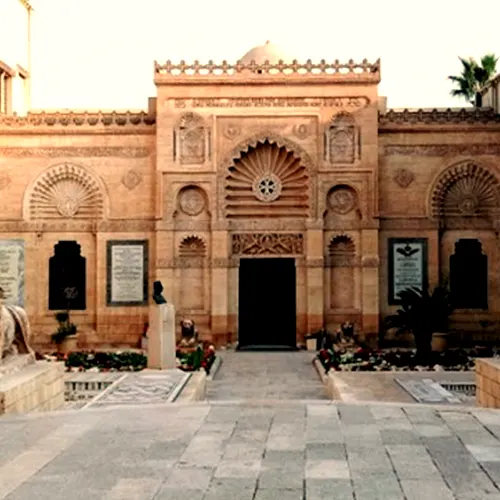
The Coptic Museum contains the most extensive collection of Coptic collections worldwide. It is located in the Coptic Cairo inside the Babylon Fortress and beside the hanging church, the Cave Church, and the Ben Ezra Synagogue.
The history of The Museum This museum was opened to the public in 1910 by the efforts of Marcus Simaika Pasha, who was interested in preserving Coptic heritage. He collected these collections by himself, buying the Coptic artifacts and architectural elements from older churches.
In 1939, the Service of Antiquities decided to transfer the Christian collection exhibited in the Egyptian Museum in Tahrir Square to be displayed in the Coptic Museum. Automatically, all discovered Christian artifacts are transferred to the Coptic Museum.
This museum consists of two buildings linked by a bridge. The first building was established by Marcus Simaika Pasha in 1910, while the second was added later in 1947.
It can be noticed that the facade of the Coptic Museum is identical to the facade of Al Aqmar Mosque in Moez St.
The museum collection: The museum building contains two floors housing various Coptic collections. These collections display Coptic history in Egypt, as Christianity was begun in Egypt by Saint Mark when he visited Alexandria in the 1st Century AD. These collections also show how the Christian community lived in Egypt.
The museum objects reflect the merger between Coptic art and other civilizations, such as ancient Egyptian art (as the collection of the Kom Abou Billou site), Greco-Roman art, Byzantine art, and Ottoman art.
The museum display is divided into:
- The stones and frescoes section houses religious scenes and stone drawings from monasteries and churches. These scenes were drawn in tempura style.
- The development of Coptic writing and manuscripts section exhibits bibles written on deerskin in the Coptic and Arabic languages from the 11th to the 13th Century.
- Fabrics and textiles section: it contains monks’ clothes decorated with crosses and drawings of the Virgin and the Christ.
- Icons section: this section has a vast collection of Coptic icons from different periods with different themes and decorations. Icon is a Greek word meaning a picture that may be a drawing of saints or other religious scenes.
- Wooden works section: this section contains several wooden works, such as doors and chairs brought from churches.
- Metal section: It displays a large number of gold Coptic coins.
- Pottery and glass section: it displays a lot of pottery and glass objects reflecting the Coptic community and history in Egypt.
For a quick visit to the Coptic Museum, the Ministry of Tourism and Antiquities launched a virtual tour of the Coptic Museum. You will be able to check it via this link. The Coptic Museum virtual tour



